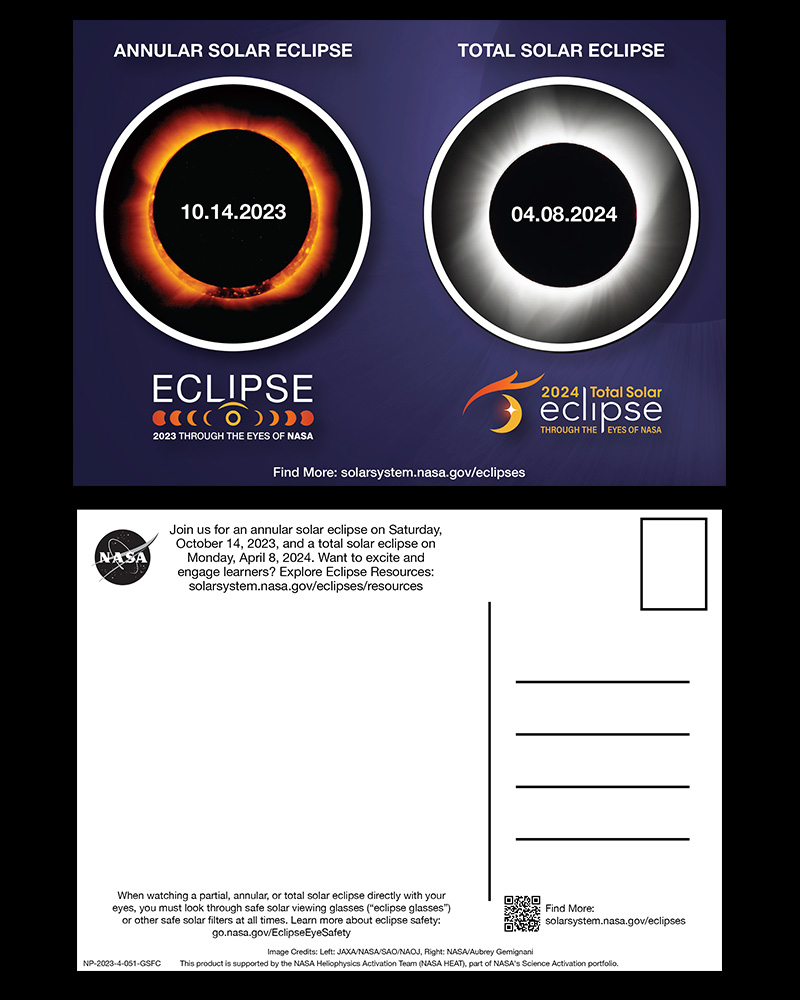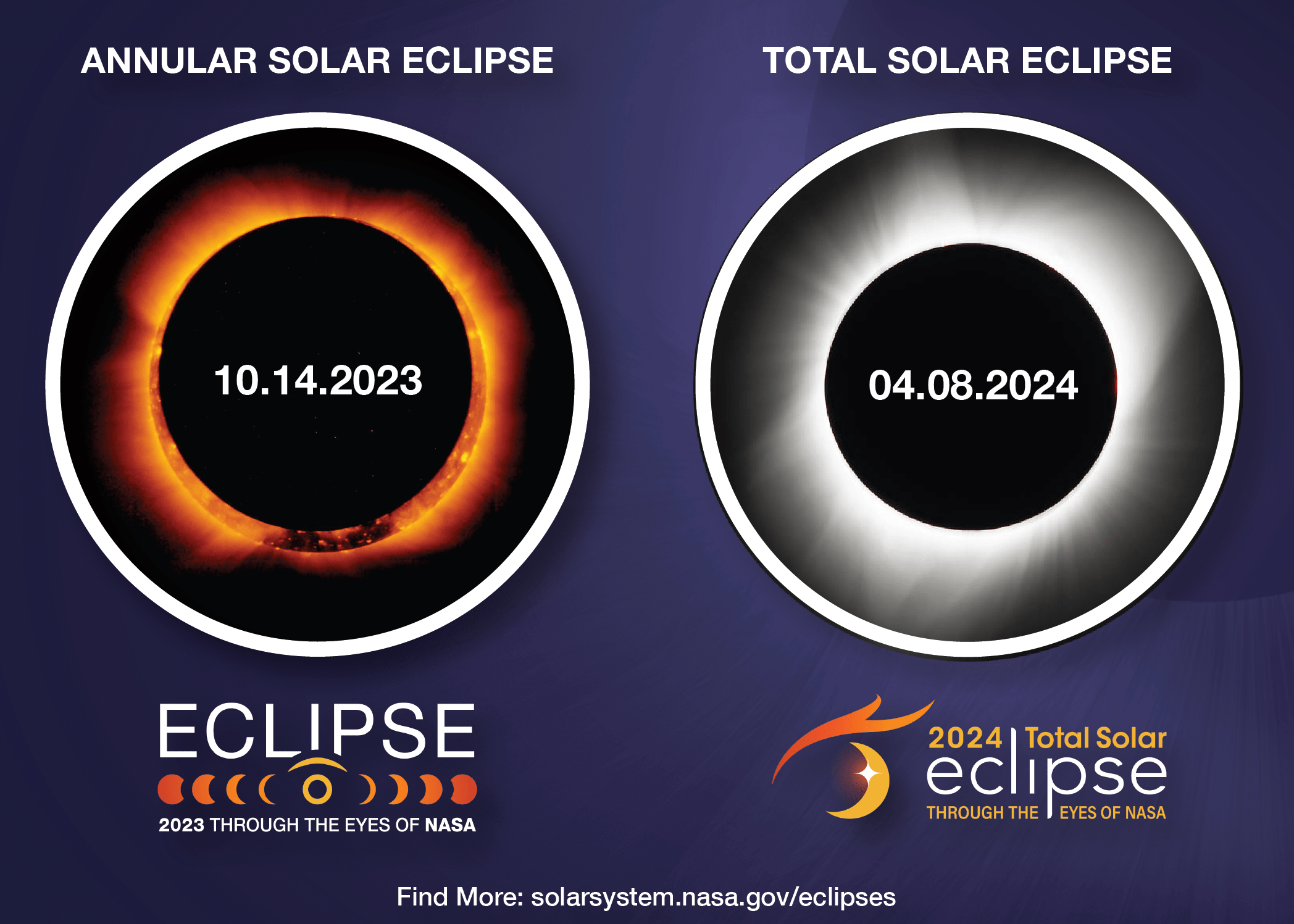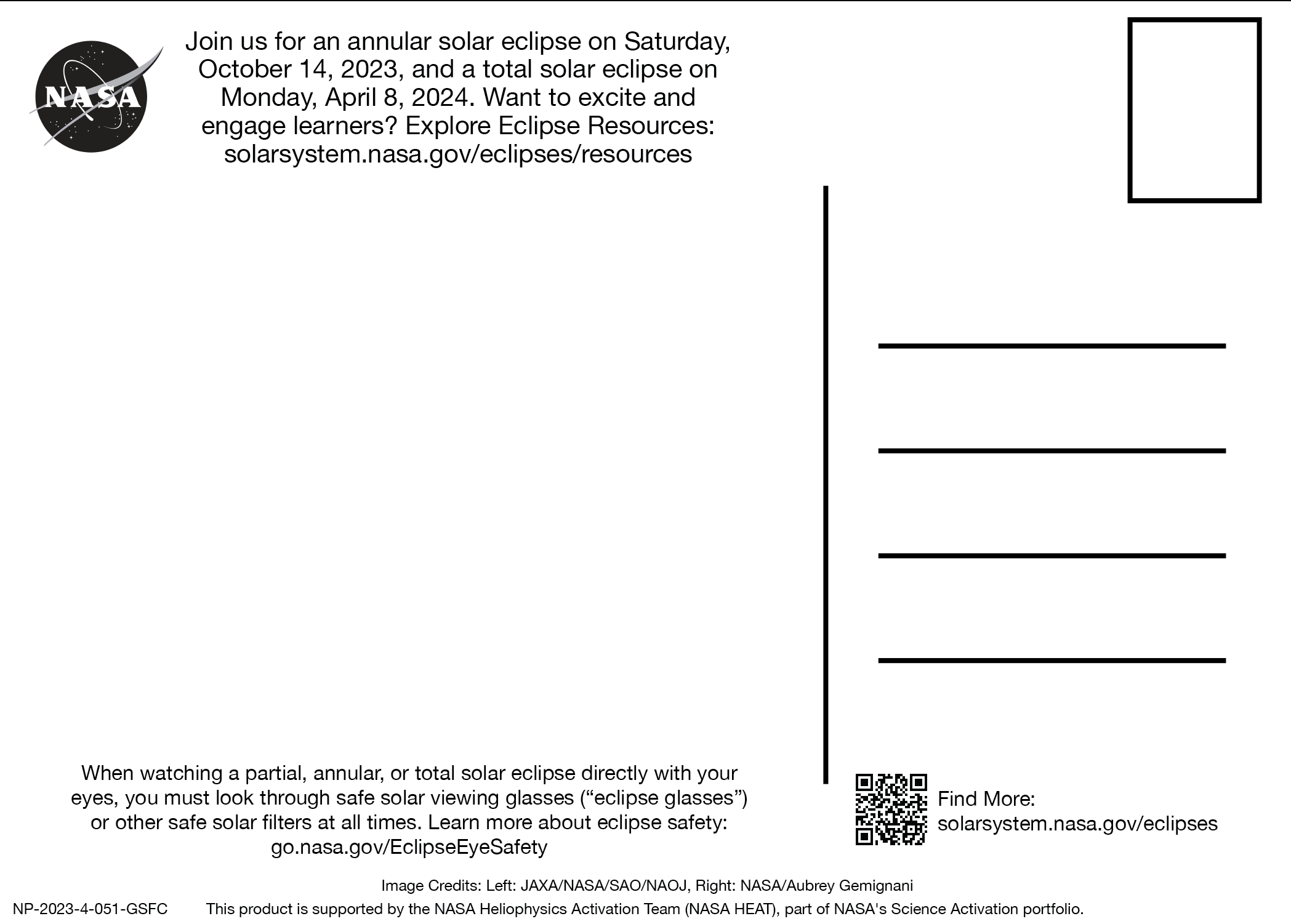Save the Date Postcard: Upcoming US Solar Eclipses

| Levels |
|
|---|---|
| NGSS |
|
| Requirements |
|
| Credit | NASA HEAT |
| Language |
|
The downloadable save the date postcard features an eye-catching design with two celestial events as the focal point. The left half showcases the upcoming annular solar eclipse, October 14, 2023, with a captivating image, taken by the Hinode satellite, that captures the beauty of the Sun surrounded by a glowing ring of light. The right half displays a mesmerizing depiction of a total solar eclipse, taken by Aubrey Gemigani, with the Moon perfectly aligning with the Sun, creating a breathtaking sight of a darkened solar disk surrounded by the solar corona. The total solar eclipse will cross the nation April 8, 2024.
The back of the postcard serves as a resource for educators and learners of all ages by providing valuable information and safety guidelines for witnessing these extraordinary events. It includes a link to NASA's eclipse website, where users can learn more about eclipse types, history, science, resources and more. The bottom description emphasizes the importance of safety during solar eclipses. It provides a concise statement that highlights the significance of using proper eye protection and cautions against looking directly at the Sun during the eclipse.
There is ample space for users to include their own handwritten message and the recipient's address. By sharing these postcards, users can invite friends, family, and colleagues to join in witnessing the awe-inspiring beauty of these upcoming solar eclipses while promoting safety and educational engagement.
This product is supported by the NASA Heliophysics Activation Team (NASA HEAT), part of NASA's Science Activation portfolio.


